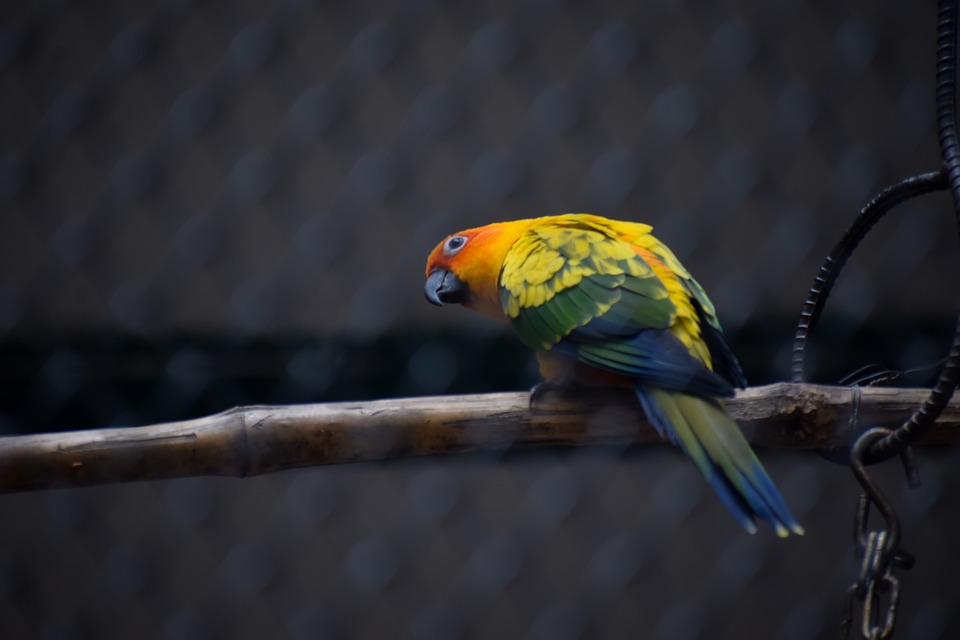Parrots are known for their incredible ability to mimic human speech and sounds, but their talent goes beyond just words. They can also imitate laughter and applause, adding another layer of fascination to their behavior. In this article, we will explore the reasons behind parrot mimicry, how it enhances their social interactions, and address some frequently asked questions to help you better understand these intelligent and entertaining creatures.
Understanding the Science Behind Parrot Mimicry
1.1 Understanding the vocal apparatus of parrots
Parrots have a unique vocal apparatus that allows them to mimic a wide range of sounds. They have a specialized voice box called a syrinx, which gives them the ability to produce complex vocalizations. This anatomical feature sets them apart from other birds and enables them to imitate human speech, laughter, and applause.
1.2 The role of mimicry in social interactions
Mimicry plays a crucial role in parrot social interactions. In the wild, parrots use vocal mimicry to communicate with each other and establish their social hierarchy. By imitating laughter and applause, parrots can enhance their ability to interact and bond with humans, as it creates a sense of familiarity and connection.
1.3 Emotional expression through mimicry
Parrots are highly intelligent creatures that are capable of recognizing and imitating human emotions. By mimicking laughter and applause, they can express their own emotions and respond to the emotional cues of their human companions. This ability adds depth and richness to their interactions, making them even more captivating and endearing.
Parrots and Laughter
2.1 Why do parrots mimic laughter?
Parrots mimic laughter because they are social animals that thrive on interaction and attention. By imitating laughter, they can join in the laughter of their human companions and strengthen their bond. It also serves as a form of positive reinforcement, as parrots often receive attention and rewards when they successfully mimic laughter.
2.2 The importance of positive reinforcement
Positive reinforcement is key to encouraging parrots to mimic laughter. Whenever a parrot successfully imitates laughter, it is important to provide them with treats or praise to reinforce this behavior. Consistency and patience in training are essential for parrots to learn and refine their mimicry skills.
2.3 How parrots interpret laughter
While parrots may not fully understand the meaning behind laughter, they can associate it with positive experiences and use it as a means of social interaction. Parrots are highly perceptive creatures and can pick up on the emotional cues of their human companions. Mimicking laughter allows them to participate in the social dynamics and create a sense of belonging.
Parrots and Applause
3.1 Parrots’ ability to mimic applause
Similar to laughter, parrots can also imitate applause. By mimicking the sound of applause, they can further engage with their human companions and contribute to the positive energy of the environment. This mimicry showcases their versatility and adaptability in mimicking a wide range of human sounds.
3.2 The influence of environmental cues
Parrots are highly sensitive to their surroundings, and their mimicry is often influenced by the sounds they are exposed to. If a parrot is frequently exposed to applause, either through live performances or recordings, they are more likely to mimic this sound. Environmental cues play a significant role in shaping their mimicry skills.
3.3 Applause as a form of communication
Applause serves as a form of communication among humans, indicating appreciation, approval, and excitement. While parrots may not fully comprehend the precise meaning behind applause, they can associate it with positive experiences and use it as a means of social interaction. This mimicry allows them to participate in the social dynamics of their human companions and contribute to the overall atmosphere.
Frequently Asked Questions
4.1 Can all parrots mimic laughter and applause?
While most parrots have the ability to mimic laughter and applause to some extent, individual capabilities may vary. Some species, such as African Greys and Amazons, are particularly skilled at imitating human sounds, including laughter and applause.
4.2 Is there a specific training method to teach parrots to mimic laughter and applause?
Parrots naturally learn to mimic sounds through observation and repetition. To encourage them to mimic laughter and applause, provide them with positive reinforcement, such as treats or praise, whenever they imitate these sounds. Consistency and patience are key in training parrots.
4.3 Can parrots understand the meaning behind laughter and applause?
Parrots may not fully comprehend the emotional context of laughter and applause, but they can associate these sounds with positive experiences and use them as a means of social interaction. It is important to remember that parrots primarily mimic sounds rather than understanding their precise meaning.
4.4 Are there any risks associated with parrot mimicry?
While parrot mimicry can be entertaining, it is important to be cautious about the sounds and phrases you expose them to. Parrots are highly impressionable, and exposure to inappropriate or offensive sounds can result in them mimicking undesirable behaviors or language. It is crucial to provide a positive and enriching environment for parrots to ensure their well-being.
Conclusion
Parrots’ ability to mimic laughter and applause is a testament to their remarkable cognitive abilities and adaptability. Understanding the science behind their mimicry and its social implications can deepen our appreciation for these captivating creatures. By providing them with a supportive and stimulating environment, we can foster their natural talents and further enhance our bond with these delightful companions.









